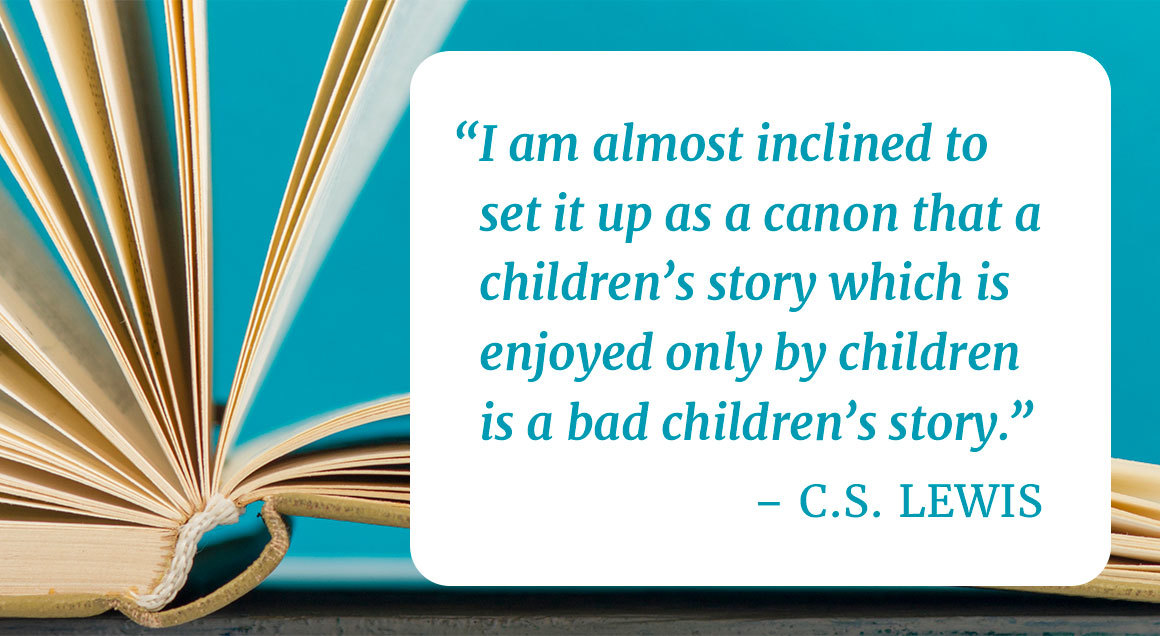Communication Begins with a 'Certainty'
By Kevin Johnson

C.S. Lewis once stated, “I am almost inclined to set it up as a canon that a children’s story which is enjoyed only by children is a bad children’s story” (C.S. Lewis, “On Three Ways of Writing for Children,” On Stories). In the same way, a children’s sermon that engages only kids isn’t a good children’s sermon.
If you’ve attended United Methodist churches long enough, you have probably seen this scenario play out: An adult, sometimes a pastor, is seated on the floor, trying to cue the kids to say something cute or something that will draw a laugh. It becomes uncomfortable, as the adult gives a very wordy message and the children around the adult aren’t paying a bit of attention.
As any good children’s advocate should be, I am a huge fan of Fred Rogers and how he used communication to speak to both adults and children in the same “room.”
What was it about the way Mr. Rogers communicated that made him so convincing? What can we learn from him in how to preach to an intergenerational audience? Deborah Tannen, a linguistics professor at Georgetown University and author states, “Everything that is said must be said in a certain way – in a certain tone of voice, at a certain rate of speed, and with a certain degree of loudness. Whereas often we consciously consider what to say before speaking, we rarely think about how to say it” (Tannen, Deborah, “The Power of Talk: Who Gets Heard and Why,” Harvard Business Review, 1996, cited in “Mr. Rogers: Five Essential Truths of His Communication,” https://instituteforpr.org/mr-rogers-five-essential-truths-of-his-communication; emphasis added).
Fred Rogers understood this.
Reflecting on Rogers and looking beyond the messages in his television program, we can learn a lot about the way in which he effectively communicated.

Writer Jacqueline F. Strayer notes that Fred Rogers used five key elements in communicating: simplicity, focus, precision, tone, and cadence (Strayer, “Mr. Rogers: Five Essential Truths of His Communication,” https://instituteforpr.org/mr-rogers-five-essential-truths-of-his-communication).
Simplicity
There is value in using simple words. Words need to be able to be understood by the audience. Strayer quotes Einstein as saying, “If you can’t explain it to a six-year-old, you don’t understand it yourself” (Strayer, “Mr. Rogers: Five Essential Truths”).
EVERY IDEA CAN BE MADE ACCESSIBLE TO A WIDE AUDIENCE
One of the revelations Strayer makes in her study of Fred Rogers is that Mister Rogers’ Neighborhood addressed some of the most difficult issues that children face, including divorce, violence in the news, and death. There was no topic that Fred Rogers felt was too upsetting to take on.
His willingness to tackle tough subject matter debunks the myth that he watered down or condescended to children when he spoke to them.
When we speak to children, we need to remember that major issues such as divorce or death affects more than the parents.
Focus
Fred Rogers had a clear focus. His skits, songs, and supporting characters, whether puppets or people, remained on target with his focus ” (Strayer, “Mr. Rogers: Five Essential Truths”).
Precision
Fred Roger’s words were focused, simple, and precise. He considered his words carefully. He was not vague in the nouns he chose; he avoided unnecessary verbs; each word supported his message. He was intentional without being studied or contrived” (Strayer, “Mr. Rogers: Five Essential Truths”).
Tone
“The tone we use tells the truth even when our words don’t, even when we’re unaware of that truth ourselves” (Strayer, “Mr. Rogers: Five Essential Truths”). Other people respond to our tone of voice. Tone was an essential part of Rogers’ success as a communicator. Tone influences how people interpret our words. Pay attention to Rogers’ tone: even, warm, gentle (Strayer, “Mr. Rogers: Five Essential Truths”).
Cadence
Fred Rogers understood the importance of not speaking too fast or too slowly gentle (Strayer, “Mr. Rogers: Five Essential Truths”).
"Part of Fred Rogers’ genius was knowing that kids have an insatiable desire to make sense of the world. Unlike too many adults who prefer to deal with problems by pretending they don’t exist, children want answers. If answers aren't available, they at least want their questions taken seriously.
Effective leaders find a way to speak the truth when it would be easy to ignore it, lie about it or attempt to make an ugly reality pretty."
- Bruce Weinstein (“How Mister Rogers Can Make You a More Effective Leader,” Forbes, July 2, 2018, https://www.forbes.com/sites/bruceweinstein/2018/07/02/how-mister-rogers-can-make-you-a-more-effective-leader/#2eeda35257bf).
Rogers wrote in a letter from 1979, “What a tough job to try to communicate the gift of Jesus Christ to anybody. It can’t be simply talked about, can it? Jesus himself used parables—so I guess that’s our directive: try to show the kingdom of God through stories as much as possible” (Peaceful Neighbor, Michael G. Long).
To learn more about Fred Rogers’ approach to communication and interaction between child and helper, visit simpleinteractions.org.
Simple Interactions is a partnership between the Fred Rogers Center, the Harvard Graduate School of Education, and the University of Pittsburgh.
Rev. Kevin Johnson is the Director, Children’s Ministries for Congregational Vitality & Intentional Discipleship at Discipleship Ministries. Kevin’s hero Fred Rogers suggests that we, “listen to the children, learn about them, learn from them. Think of the children first.” This quote defines Rev. Kev’s approach to ministry. Kevin, an ordained elder of the Kentucky Annual Conference, has over fifteen years of ministry experience in which he has thought of the children first. Prior to ministry, Kevin worked with children in the hospital setting and in group homes for emotionally and physically abused children.
Contact Us for Help
View staff by program area to ask for additional assistance.
